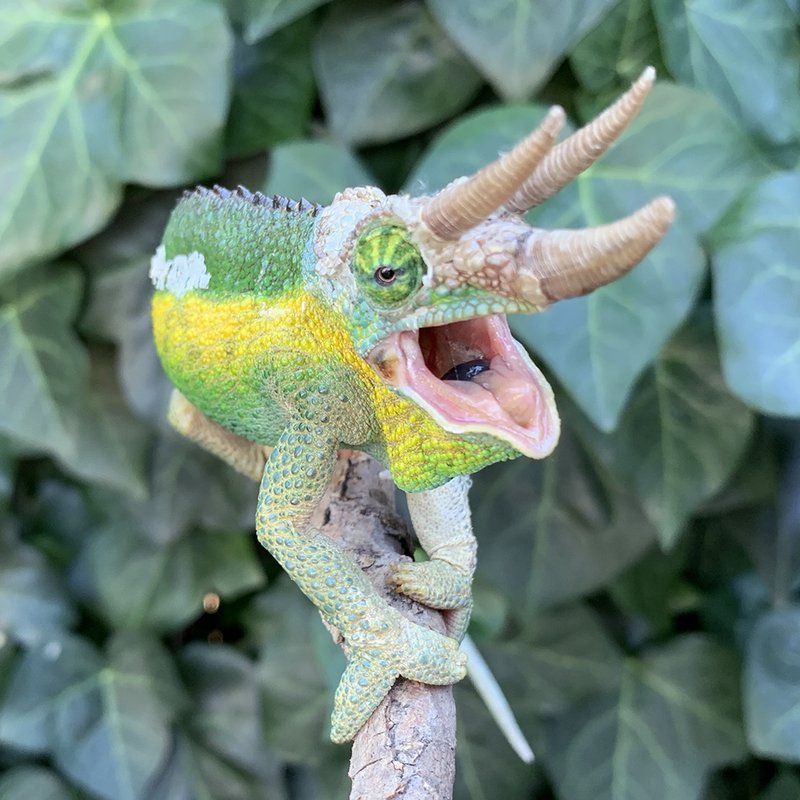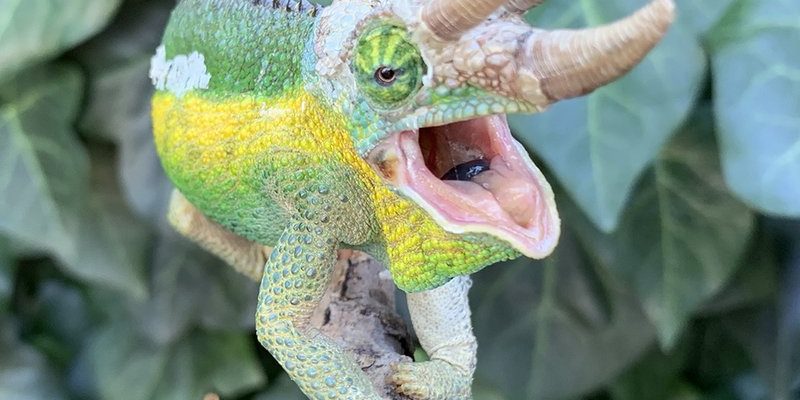
Breeding Parson’s Chameleons can be a fascinating adventure, but it also comes with its own set of challenges. Similar to cultivating a garden requires knowledge of climate, soil, and water, breeding chameleons involves creating the right environment, understanding their needs, and recognizing the signs of health and stress. Let’s break down what you need to know to successfully breed these incredible creatures.
Understanding Parson’s Chameleon Behavior
Before diving into breeding, it’s important to grasp the unique behaviors of Parson’s Chameleons. These reptiles are known for their highly territorial nature. Males often display vibrant colors to attract females, but they can be quite aggressive towards one another. Imagine a colorful light show signaling dominance and interest—it’s both beautiful and fierce.
When keeping a breeding pair, you’ll want to observe their interactions closely. Stress signals can include rapid color changes or aggressive posturing. You might be wondering how to foster a peaceful environment. Providing ample space and hiding spots is crucial. This way, they can retreat when feeling threatened, thus reducing stress.
In addition, these chameleons are diurnal, meaning they’re active during the day. To promote a healthy breeding environment, ensure they have access to natural light or a good quality UVB light source. This helps them maintain their metabolism and overall health, which is vital for breeding success.
Setting Up The Ideal Habitat
Creating the right habitat is essential for breeding Parson’s Chameleons. Think of their enclosure as their personal kingdom—comfortable, safe, and stimulating. A large terrarium is a must; ideally, it should be at least 4 feet tall and 2 feet wide. This provides enough space for climbing and exploration, which is important for their physical and mental health.
You’ll want to incorporate various plants—real or artificial— to simulate their natural environment. Live plants, like pothos or hibiscus, not only provide cover but also help with humidity levels. Humidity is crucial, so consider adding a misting system or regularly spraying the habitat with water. Keeping the humidity around 60% to 80% will mimic their native tropical habitat.
Don’t forget about temperature! These chameleons thrive in a gradient of temperatures, generally between 75°F and 85°F during the day. You can use heat lamps to create a basking area. Remember, they need a cooler area to retreat to if they get too warm. Keeping the climate in check is vital for their well-being, especially when breeding.
Nutrition Needs During Breeding
Once the habitat is set, let’s talk about diet. Proper nutrition plays a crucial role in the breeding success of Parson’s Chameleons. A well-balanced diet typically includes a variety of insects—crickets, roaches, and silkworms are great options. Just like a balanced meal is important for us, it’s the same for them.
During the breeding season, female chameleons have increased nutritional needs. It’s a bit like prepping for a big event; they need extra energy and nutrients. You can provide supplements like calcium and vitamin D3 to ensure they stay healthy. It’s important to dust their food with these supplements a few times a week.
Hydration is just as important. Chameleons often drink water droplets off leaves, so misting their habitat encourages them to hydrate. If they don’t get enough water, it can lead to dehydration, which is a serious concern, especially during breeding.
Pairing and Introducing Your Chameleons
Introducing a male and female Parson’s Chameleon for breeding can be a bit of an art. Here’s the thing: you don’t want to just toss them together and hope for the best. Start by letting them see each other from a distance. This helps them get used to each other without the stress of direct confrontation.
After a few days of observation, you can introduce them in a neutral space. Look for signs of readiness—if the female is receptive, she’ll often display brighter colors and may even show interest in the male. You might notice the male doing his best to impress her, exhibiting his most vibrant colors and even doing a little dance.
Once they’re paired, monitor their interactions closely. If you see aggression, it’s essential to separate them immediately to prevent injury. Sometimes, chameleons need a little time to figure out their dynamics. You might have to try reintroducing them a few days later.
Incubation and Caring for the Eggs
If all goes well, you’ll soon find yourself with eggs! Female Parson’s Chameleons usually lay between 15 to 30 eggs, which she will bury in the substrate. It’s like she’s planting future chameleons in the ground! For incubation, the eggs need to be placed in a separate container filled with a moist substrate, such as vermiculite or perlite.
The ideal incubation temperature is between 75°F to 80°F, with humidity around 70%. You might want to invest in an incubator to maintain these conditions consistently. It’s a waiting game, as eggs can take anywhere from five to nine months to hatch. During this time, ensure the eggs remain undisturbed and check the moisture levels periodically.
Once the eggs hatch, tiny baby chameleons emerge, and it’s a magical moment! These little ones will need their own setup, as adult chameleons can be territorial. Provide them with plenty of hiding spots and appropriate food, like small fruit flies or pinhead crickets.
Common Challenges in Breeding Parson’s Chameleons
While breeding Parson’s Chameleons can be rewarding, it’s not without its hurdles. One of the biggest challenges is the health of both the male and female. Conditions like stress, improper nutrition, or inadequate habitat can affect their ability to breed successfully. This is why keeping a close eye on their behavior and health is important.
Another challenge is dealing with the eggs after they’re laid. Sometimes, eggs can be infertile, leading to disappointment. It’s important to understand that even healthy-looking pairs may not always produce viable eggs. This is part of nature’s unpredictability.
In addition, baby chameleons can be delicate. They require specific care, and not every hatchling will survive. Providing the right environment and nutrition is crucial in these early days. It’s a big responsibility, but with patience and care, you can guide them through this delicate phase.
Breeding Parson’s Chameleons is indeed a rewarding endeavor, though it comes with its fair share of challenges. From creating the perfect habitat to monitoring behavior and nurturing tiny hatchlings, every step is crucial. With some preparation and commitment, you can successfully breed these stunning reptiles.
Ultimately, it’s about understanding their needs and being patient. Like a gardener tending to plants, your effort will show in the health and vibrancy of your chameleons. So roll up your sleeves, dig in, and enjoy the journey of bringing new life into the world of Parson’s Chameleons!

